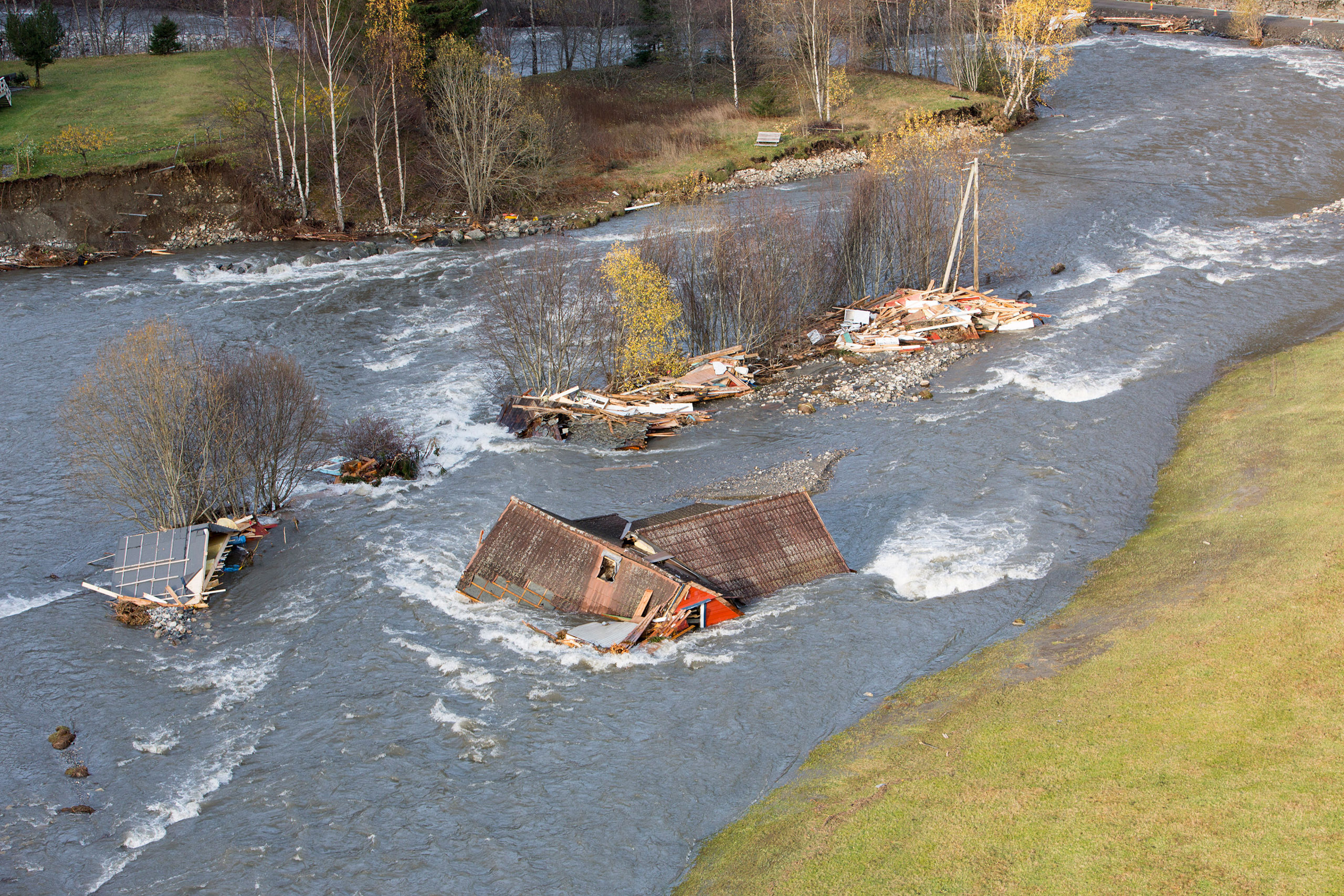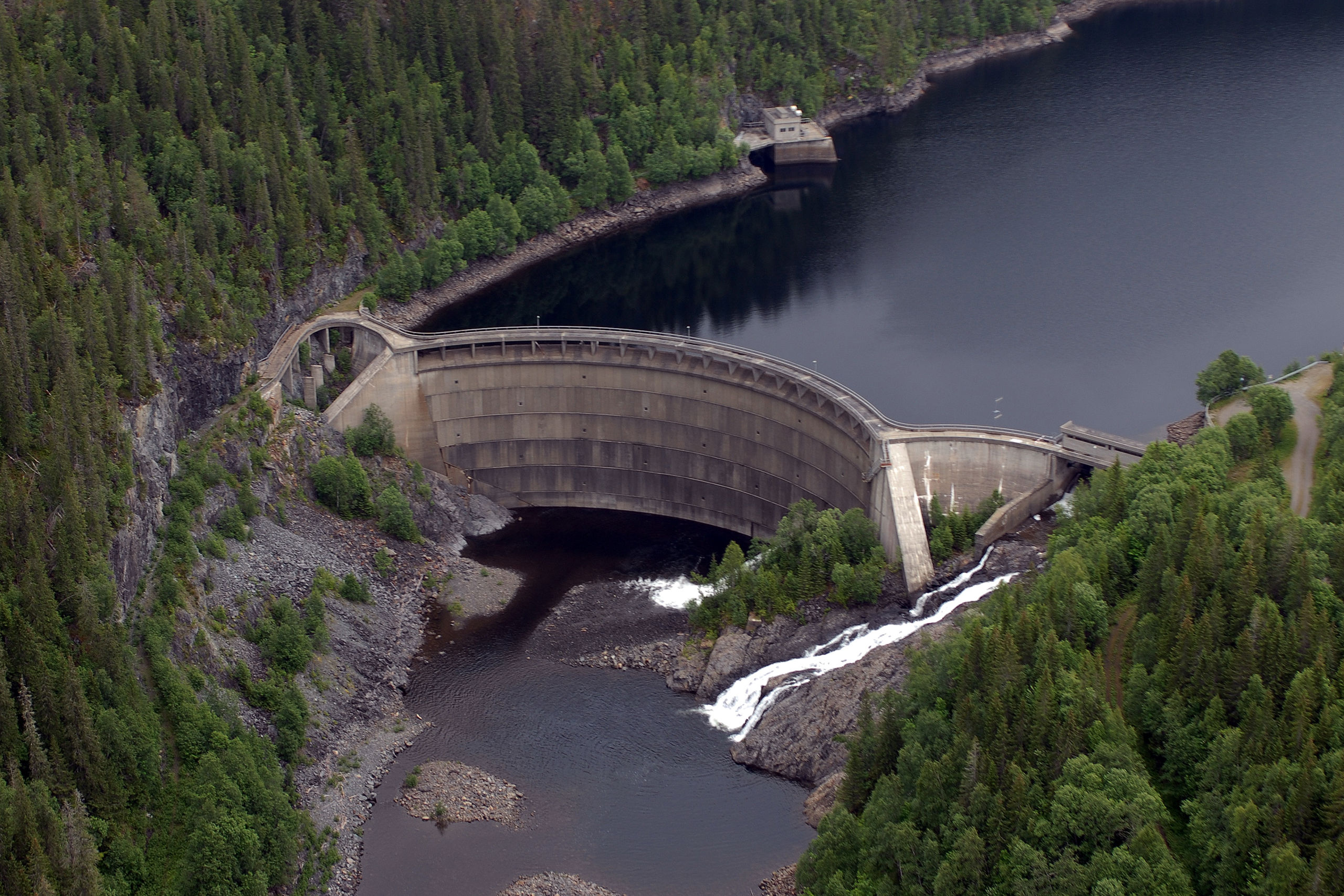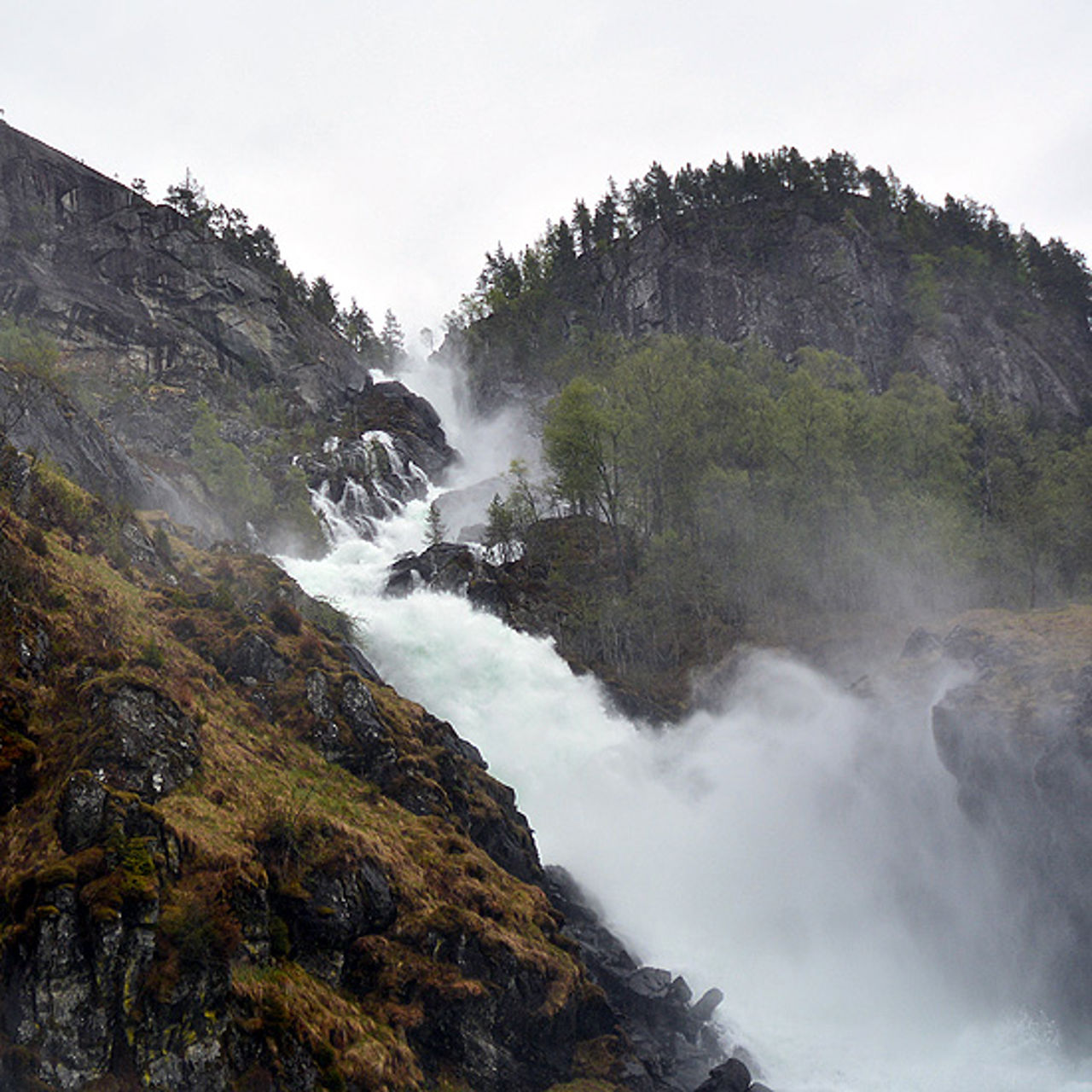Hydropower as a flood defence system
Extreme weather with torrential rain and devastating floods is one of the consequences of climate change and global warming. Examples from Norway show that hydropower plants can help reduce flood peaks and prevent flood damage – also during periods of heavy snowmelt in the mountains.
Floods cost society vast sums of money each year. Since 2011, flood-related social costs in Norway have exceeded NOK 1 billion almost every year.
In 2017, insurance companies paid out almost NOK 900 million to cover claims resulting from natural events in Norway. More than half of these were compensation for loss or damage caused by floods. Damage to roads and other infrastructures will also have long-lasting and costly knock-on effects for society.
Flood defence as a focus area
One of the solutions to the growing threat of floods lies in our hydropower plants.
According to Kåre Hønsi, who is power production manager at Statkraft’s Central Norway Region, flood defence is something that Statkraft focuses on continuously.
“Using data models and physical measurements, we can estimate the volume of snow in the mountains and what we can expect when it starts to melt. If we see that there is likely to be an overflow, we lower the water level in our reservoirs. In this way, the melt water goes into our reservoirs and not straight into a river. We are therefore able to reduce or flatten the flood crest,” he says.
But the spring snow melt is not the worst problem. Autumn is far worse, since the reservoirs are already relatively full and it is a period when larger and more unpredictable rainfalls occur.

More and more unpredictable
Statkraft makes use of expertise and measurements to try and predict developments. But climate change has made the task more complicated.
“Previously, we could use historical data to predict developments. To a greater and greater extent, we are now having to respond to what the climate is doing. We experience the impact of climate change first hand. There have been many challenging years recently. Weather conditions have become more unstable and therefore harder to predict and deal with,” Kåre Hønsi explains.
“For example, the winters used to be more stable and predictable, but now we find that the autumn floods can last until after New Year!”

The Flåm area in Aurland Municipality in Vestland County in Norway were affected by major flood damages in 2014 – in watercourses that were not regulated.
“We experience the impact of climate change first hand. There have been many challenging years recently. Weather conditions have become more unstable and therefore harder to predict and deal with.”
Increasing frequency of extreme weather events
Professor Knut Alfredsen works at the Department of Civil and Environmental Engineering at the Norwegian University of Science and Technology (NTNU). Water supply and drainage technology, as well as hydropower construction, are among the areas the department focuses on. According to Alfredsen, the unpredictable climate is causing challenges in these areas.
“We are seeing extreme precipitation events, by which I mean vast quantities of rain or snow falling within a short space of time, with increasing frequency. In some parts of Norway, there has been a fairly substantial increase. So flood prevention is an important field of study for us. We are having to scale up our models to adjust to the changing climate.”
Professor Alfredsen explains that flood prevention is challenging, particularly in urban areas.
“For example, you can’t dig up all the drainage pipes and lay new ones. It would be far too resource intensive for society. The pipes are buried underground, often under paved roads that carry a lot of traffic. Instead, you could, for example, create green beds that can slow down the mass of water and soak it up.”

The Hegset Dam dams Bjørgamagasinet, which is a reservoir for the Hegsetfoss power plant in the Neavassdraget River in Selbu Municipality in Trøndelag County, Norway.
“If we see that there is likely to be an overflow, we lower the water level in our reservoirs. In this way, the melt water goes into our reservoirs and not straight into a river. We are therefore able to reduce or flatten the flood crest.”
Hydropower effective against floods
The professor believes that hydropower schemes are definitely effective with regard to limiting the scale of flooding.
“If you have available capacity in the reservoirs, you can use it to flatten the flood crest. One example is the so-called Vesleofsen, the extreme flood that affected Norway’s eastern region in 1995. At that time, the reservoirs were used successfully to absorb much of the flood crest and reduce the scale of the damage to some extent.”
Since the Vesleofsen was a spring flood, the water level in the reservoirs was already at a naturally low level after the winter. It was therefore not necessary to intervene manually and implement special measures.
“At that time, we saw the storm was coming, and were successfully able to lower the reservoirs’ water level beforehand, thereby moderating the flood crest. This is an example of planned flood moderation.”

However, it is not always easy to predict when floods may occur. And the water is not regulated in all watercourses. The flood that hit Western Norway in 2014 is an example.
“Flooding caused severe damage in 2014, especially in Voss and Flåm. But it was the result of watercourses not used for hydropower production bursting their banks. As such, there was no way to regulate the flow of water. The river systems simply had to absorb the volume of precipitation that fell,” says Statkraft's Kåre Hønsi.
“We can never issue any guarantees against flood damage in watercourses regulated for hydropower, but active adjustment of reservoir water levels undoubtedly helps to reduce the risk substantially,” he says, before adding:
“So, hydropower not only contributes to society in the form of value creation and renewable power, it can also help to reduce flooding and limit the damage caused by floods.”

More about hydropower and flood prevention
Climate change results in more extreme weather with large amounts of precipitation in a short time. Sudden floods can cause major damage, but hydropower reservoirs can play an important role as flood defences.